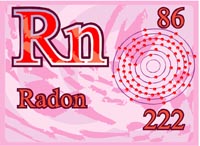Protecting Your Home from Radon
Protecting Your Home from Radon

Radon can be found in many homes in Kentucky, but with proper testing and fairly simple home alterations, it can be eliminated.
Associates with the University of Kentucky Cooperative Extension Service are working to get the word out on this deadly, radioactive gas and what can be done to protect you and your family. Most recently, they were at the Renovation and Landscape Expo in Louisville.
“We come to events like this to educate people about the health risks of radon. It is the second leading cause of lung cancer and is present in Kentucky and throughout the United States,” said Heather Robbins, UK Extension associate with the radon education program.
Radon is a radioactive gas that comes from the breakdown of uranium in the ground. It is more variable in Kentucky, because we have a large uranium ore deposit and karst topography, or limestone, which gives it easier movement to the surface of the ground, she said.
“It gets in your home and gets trapped,” Robbins said. “A lot of people think it only happens in homes with basements but it happens in all types of homes – homes built on concrete slab, homes with crawl spaces and even mobile homes if you have tight skirting.”
Radon fluctuates throughout the year, because of the karst topography and seasonal variations, so a yearlong testing program is recommended.
The only way to know if your home has a problem is to test. Free test kits are available from local health departments or by calling the Robbins at 502-564-4856.
The EPA recommends average yearly radon levels below 4 piC/L. If your home tests are higher, then a radon mitigation system can be installed to lower radon levels. Information on the state Web site, can assist a homeowner in finding someone to install a system to lower the radon level.
The system can cost between $500 and $2,000, depending on the type of home you have. It is best to install a system during new construction.
The mitigation system in most cases is going to be a sub-slab depressurization, said Jerry Hash, UK Extension housing associate. That simply means you are going to have a 4-inch PVC pipe penetrating through the slab and out through the roof. This takes the radon and vents it safely out in the environment where it is harmless, he said.
More and more people are installing these systems during new construction but there are no regulations to do so, he said.
“So, we are out with the home builders associations and remodels, talking with them about how they can put these in using a passive system. This means when you are building a house, penetrate the slab, and run the pipe on up through the roof and you can do that for about $300.”
After the system has been in place for about a year, homeowners can check for radon and if they are still getting unacceptable levels, a fan can be added to the system in the attic to maintain suction for the radon to be removed from the home, he said. The system also can be used in crawl space homes as well as a slab or basement structure.
To learn more about radon mitigation and testing, contact your local health department or your county Extension office.
